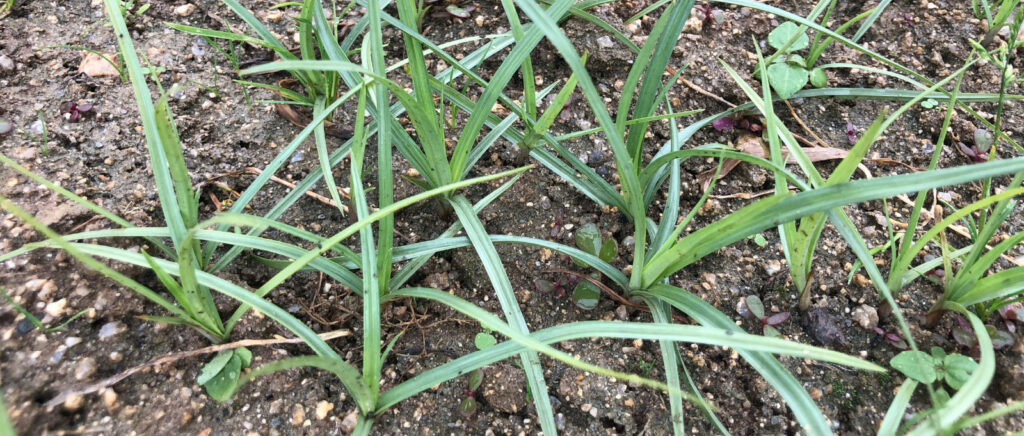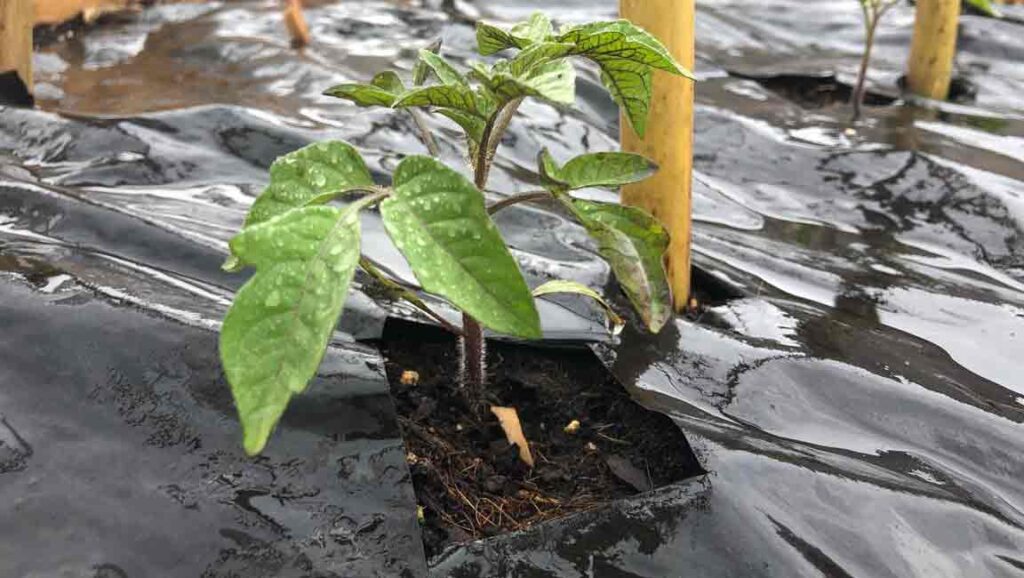Planting Lettuce: Importance and Economic Scope for Various Cultivation Models.
Yes. In this guide, we’ll learn how to plant lettuce. However, this excellent and highly profitable agricultural project invites us to discover everything that surrounds this wonderful herbaceous plant, “Lactuca sativa,” belonging to the Asteraceae family, with tender, edible leaves, highly valued today in the global horticultural industry.
Its origin dates back more than 4,500 years, making it one of the oldest vegetables cultivated by humans, from its primitive wild nature to its current domesticated and evolved morphology.
Planting lettuce today brings us significant, long-term economic benefits, as this fast-growing herbaceous crop, adaptable to different cultivation methods, both domestic and large-scale, is increasingly in high demand in all markets and throughout the year.
Here’s a video to learn how to plant lettuce easily:
And we share another video that may interest us:
International markets with high demand for lettuce.
- United States and Canada: Pre-packaged lettuce has a very profitable and significant output year-round.
- European Union: Spain, Italy and France are considered the countries with the highest production and exports.
- Asia: Lettuce varieties are very popular in healthy and traditional menus.
- All of this indicates that planting lettuce is a productive and sustainable activity over time, very beneficial for small, medium, and large-scale farmers, as well as for those who cultivate home and community gardens.
Planting lettuce as a convenient and productive agricultural project throughout the year.
If we have decided to plant lettuce for commercial or large-scale purposes, we will have multiple advantages that will provide us with considerable economic returns. Depending on the morphology and needs of this herbaceous plant, which is easy to treat during its cultivation, we can reduce labor costs by automating and simplifying the sowing, irrigation, and harvesting processes. This is where our effective agricultural assistant comes in: biodegradable paper mulch.
Using biodegradable paper mulch to plant lettuce.
- This innovative technique allows us to reduce costs that could otherwise unexpectedly deplete our initial budget. The reason is that paper mulch is specifically designed to minimize water consumption because it maintains the necessary and adequate moisture in the crop throughout the entire growing process, from seed to harvest.
- Furthermore, paper mulch promotes soil fertility, reduces and inhibits the emergence and proliferation of weeds such as sedge, protects and controls the presence of pests and diseases specific to lettuce, and biodegrades at the end of planting, becoming a rich and nutritious organic fertilizer for our future agricultural projects.
- When we choose to plant lettuce using biodegradable paper mulch in greenhouses or other protected areas such as tunnels, shade nets, insect screens, or mesh houses, we improve the quality and stability of the crop and open up the possibility of a continuous supply for annual markets, regardless of the variability of climatic factors.
- On the other hand, planting lettuce represents a wonderful opportunity to simultaneously share the cultivation of other vegetable species, thereby renewing the soil and maximizing its productivity.
Buy Novamulch biodegradable paper agricultural mulch in our online store.
-
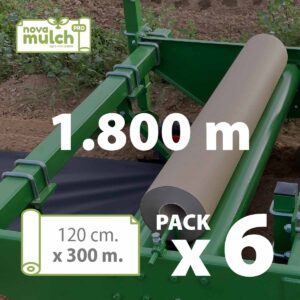 PACK of 6 rolls of Novamulch Professional paper 120 cm. x 300 m. (1.800 m)565,28 € IVA incluido
PACK of 6 rolls of Novamulch Professional paper 120 cm. x 300 m. (1.800 m)565,28 € IVA incluido -
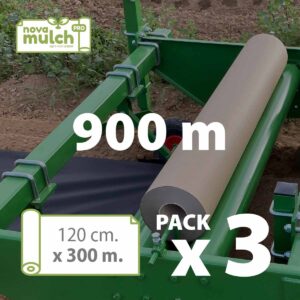 PACK of 3 rolls of Novamulch Professional paper 120 cm. x 300 m. (900 m)282,22 € IVA incluido
PACK of 3 rolls of Novamulch Professional paper 120 cm. x 300 m. (900 m)282,22 € IVA incluido -
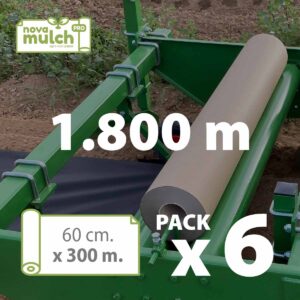 PACK of 6 rolls of Novamulch Professional paper 60 cm. x 300 m. (1.800 m)282,22 € IVA incluido
PACK of 6 rolls of Novamulch Professional paper 60 cm. x 300 m. (1.800 m)282,22 € IVA incluido -
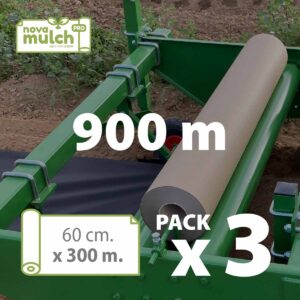 PACK of 3 rolls of Novamulch Professional paper 60 cm. x 300 m. (900 m)141,30 € IVA incluido
PACK of 3 rolls of Novamulch Professional paper 60 cm. x 300 m. (900 m)141,30 € IVA incluido -
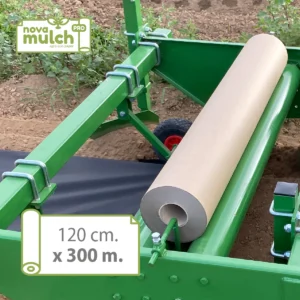 Novamulch Professional Paper 120 cm. x 300 m.94,21 € IVA incluido
Novamulch Professional Paper 120 cm. x 300 m.94,21 € IVA incluido -
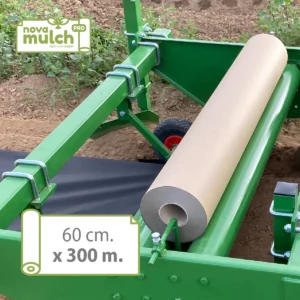 Novamulch Professional Paper 60 cm. x 300 m.47,10 € IVA incluido
Novamulch Professional Paper 60 cm. x 300 m.47,10 € IVA incluido -
 Novamulch paper 120 cm. x 20 m.41,63 € IVA incluido
Novamulch paper 120 cm. x 20 m.41,63 € IVA incluido -
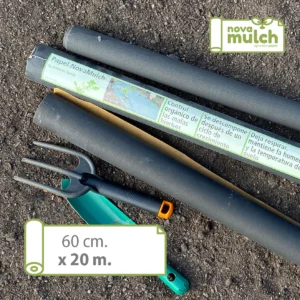 Novamulch paper 60 cm. x 20 m.21,89 € IVA incluido
Novamulch paper 60 cm. x 20 m.21,89 € IVA incluido -
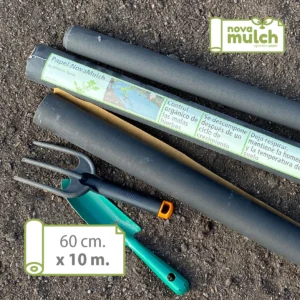 Novamulch paper 60 cm. x 10m.14,85 € IVA incluido
Novamulch paper 60 cm. x 10m.14,85 € IVA incluido -
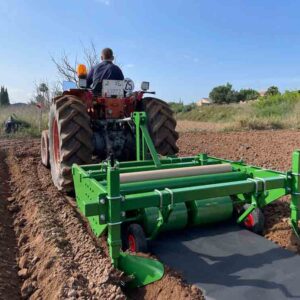 Novamulch agricultural mulching machine
Novamulch agricultural mulching machine
Planting lettuce on a large scale for commercial purposes.
- On large tracts of land, we can plant more than 40,000 lettuces per hectare with the guarantee of seeing a return on our investment in a short period of time. Depending on the variety we select, which we will study in this agricultural space, we will obtain the harvest in approximately 30 to 70 days.
- Let’s remember that lettuce has a short growth and development cycle, which allows us to produce several harvests a year and thus quickly recover our investment.
- Another economic benefit of planting lettuce compared to other crops is the low cost of seeds, which is affordable for everyone, as are the costs of fertilization, especially if we use biodegradable paper mulch.
- Likewise, taking advantage of the stable market demand throughout the year, lettuce in all its varieties and presentations (fresh, chopped, packaged) represents an excellent business model. Depending on our needs, we can make direct sales to supermarkets and distributors or we can choose to export our lettuce. In all these cases, we will achieve a return on investment and exceed our expectations.
Importance and benefits of planting lettuce in home gardens.
This practice has become a healthy and fairly common habit today, as it’s very easy to plant lettuce in different formats: in an area of our gardens or on terraces and balconies, in pots, in containers arranged in vertical structures, and with a good dose of natural light.
These vegetables, with short development cycles of approximately 30 to 70 days, provide us with multiple benefits:
- We see our economy experiencing a reduction in expenses because we avoid frequent purchases of this vegetable in supermarkets and local markets.
- Planting lettuce and having it on hand at home, fresh and without chemical additives, is a vital benefit. Furthermore, we can harvest leaves continuously for several weeks, which represents a healthy and profitable harvest. Since we harvest them just before consumption, they will improve not only their flavor but also their nutritional value.
- All we need is a small investment in good seeds, a space for organic material (homemade compost), and proper irrigation of the roots, and we’ll get several harvests throughout the year.
- Let’s remember that planting lettuce provides us with water, fiber, vitamins A, C, and K, iron, and potassium, and if we decide to create a garden at home, we’ll be sure to eat healthily.
- Other benefits of growing lettuce at home include promoting self-sufficiency and the ability to sell our surplus produce to neighbors and local markets.
- If we plan to be self-sufficient over time, this is a great opportunity to start or continue growing easy-to-maintain crops like lettuce. At the same time, we will become less dependent on retail chains, especially during periods of crisis and shortages, as we will have our own continuous fresh produce.
Planning a home garden represents a great learning experience for the family and our little ones:
- We can actively teach the importance of caring for the environment and adopting a healthy diet.
- We teach how to wait and observe the cycle of each plant, and how to assume the responsibility of maintaining and properly nourishing our crops.
- To understand that it’s vital to connect with nature despite living in urban areas, and to create green and sustainable spaces there with our own hands.
- To learn that we can reduce our environmental impact and carbon footprint by implementing biodegradable paper mulch, which is a necessary technique to help us further reduce our investment costs when we decide to create each garden.
- To experience the purpose and process of paper mulch, which maintains the correct moisture content of the crop from the beginning to the harvest, inhibits the appearance of weeds and the proliferation of pests and diseases specific to each plant, and allows us to grow without the need for pesticides and synthetic fertilizers because the paper mulch material biodegrades and becomes an excellent nutrient fertilizer for our next agricultural activity.
Planting lettuce as a micro-enterprise.
Many of us have created a profitable business with this practice. Growing lettuce at home allows us to sell it at local markets, specialty stores, or directly to consumers interested in healthy, fresh, and organic foods.
This activity is becoming a highly successful urban and community endeavor, as it is promoting the creation of school, educational, and therapeutic gardens, which also benefit year-round from the continued sale of their products at fairs and on local commerce digital platforms.
Agronomic characteristics of Lactuca sativa, Lettuce.
Life cycle and morphological characteristics. General analysis.
- As we mentioned at the beginning of this agricultural study, lettuce is a herbaceous plant from the Asteraceae family, an annual leafy vegetable like spinach and chard, and has particular qualities that distinguish it from its sister plants.
- It’s an annual herbaceous plant because its life cycle is completed in less than a year; between 30 and 70 days: it germinates, develops, flowers, produces seeds, and dies. This means we can plant lettuce in any season, as it doesn’t sprout again after being harvested.
- We must take into account the timing of the lettuce harvest, which we will discuss later, because when it begins to flower, it will enter its reproductive phase and lose its optimal qualities for consumption.
- Due to its short life cycle, it is very convenient when we need to rotate our crops: this makes it very easy to alternate with other vegetables while helping us nourish and regenerate the soil.
Root system and absorption capacity:
- It is superficial, which indicates that its thin, multiple roots extend into the first layers of the soil and are formed from the base of the stem and not through a main root.
- When planting lettuce, we must consider the nature of the soil available and the proper preparation of the substrate. Since lettuce roots spread horizontally and are sensitive to water stress, our soil must be well conditioned to absorb and retain frequent watering.
- Lettuce quickly absorbs the nutrients we’ve provided, so we’ll take periodic measurements if soil or weather conditions fluctuate when we don’t implement biodegradable paper mulch. However, if we apply it at the beginning of our planting, we’ll avoid the inconvenience of frequent irrigation, which will cost us more in terms of water use, especially if we live in areas with water shortages and high temperatures.
Stems:
In almost all lettuce varieties, the stems are short and tend to lengthen at the end of vegetative growth to enter the flowering phase. This process of lengthening the stems is known as “bolting.”
Leaves:
- When we decide to plant lettuce, we visualize that we will take advantage of its tender leaves, with a crunchy and refreshing texture, especially due to its high water content (95%), and vitamin B12. In general, and depending on the variety that we will study below, its leaves take the form of a rosette, lanceolate, oval, lobed, with a rough, curly, curly or smooth texture, all in different shades of green and some with reddish or purple pigments.
Flowers:
- When lettuce reaches the end of its vegetative development, it will begin its reproductive stage and produce a stem, already tall, that can reach between 60 and 120 cm in height, with a receptacle full of small, elongated, pale yellow flowers, protected by a bud-like cover.
- These flowers house both male and female reproductive organs, which means they are hermaphroditic, and pollination will generally occur through the effects of the wind (from the dispersal of the achenes, which are the dry, velvety fruits that contain the seeds), or through the intervention of insects.
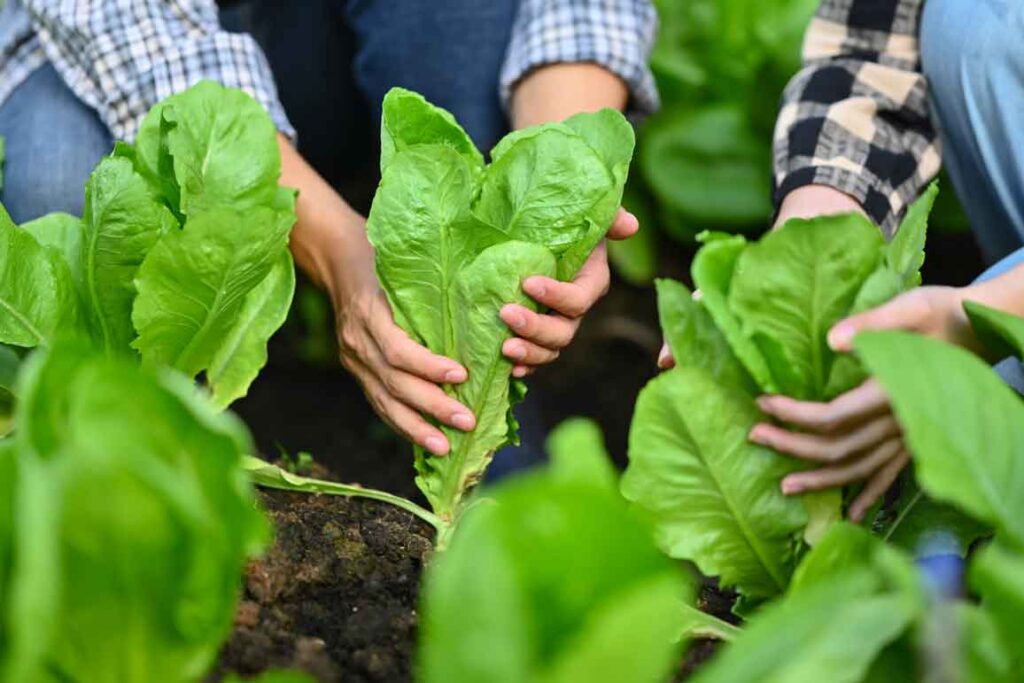
Most common varieties to consider before planting lettuce.
- Before planting lettuce, it is important to consider several vital factors to successfully achieve our project. Let’s study:
- We will select those varieties that are most suitable for our climatic conditions and our needs, whether personal or with a view to profitability on a larger scale.
- We’ll analyze the composition and condition of the growing space or soil available and use biodegradable paper mulch to avoid unnecessary expenses and not deplete our initial budget.
- Here we present our report.
General classification of lettuce varieties:
- Romaine or Cos lettuce.
- Iceberg or Cabbage lettuce.
- Loose leaf or oak lettuce.
- Batavia lettuce.
- Butterhead lettuce.
Let’s analyze:
Romaine or Cos lettuce: with a crisp texture and slightly sweet flavor, it is especially appreciated in Caesar salads.
The central part of this lettuce has long, straight, tightly packed leaves, forming the head, or central part of the plant, like a vertical column or heart.
Here are the most notable varieties of this lettuce: Little Gem, Valmaine, and Parris Island Cos.
Iceberg lettuce or cabbage lettuce: Its shape is compact and rounded, as is the heart or central part (spherical and very tight); hence its name, as its shape is similar to that of a cabbage.
The leaves of this lettuce grow on top of each other in layers that curl inward, yet are looser than the Romaine variety, and toward the center take on a slightly paler, light green or almost white hue, very crisp and ideal for salads, cold dishes, sandwiches, burgers, and tacos.
In this group we highlight the Great Lakes, Imperial 615 and Salinas varieties.
Loose-leaf or Oak lettuce: here we find a great variety of shapes and colors (green, purple, red), and these lettuces with a tender texture, mild or medium-spicy flavor and loose leaves, have very short development cycles, which makes them ideal for obtaining quick harvests and very convenient for urban and domestic gardens.
Planting oak lettuce will also allow us to benefit from multiple cuts over time, as this variety will continue to produce more shoots.
The following varieties stand out in this group: Lollo Rosso (red), Lollo Bionda (green), Red Salad Bowl, and Green Oak Leaf.
Batavia lettuce: This variety can be described as a cross between Romaine and Iceberg lettuce; it has wavy, crisp leaves and a looser, more open head.
They adapt well to warm temperatures and are very resistant to disease.
Their texture is ideal for preparing mixed salads, and we highlight the most notable:
Nevada, Crispino, and Summer Wonder.
Buttercrunch Lettuce: Light green or yellowish in color with very tender, soft leaves, these lettuces are highly prized for their delicate flavor and are ideal for eating fresh.
They are best grown in spring and fall, and the notable varieties in this group are Boston, Buttercrunch, and Trocadero.
Once we have analyzed each variety and its most notable varieties, when we decide to plant lettuce, it is advisable to consider which one is best for us.
For example, if we’re going to produce on a large scale, Iceberg and Romaine lettuces are very suitable, while if our plan is to plant lettuce on a smaller scale, in urban or domestic gardens and to obtain frequent harvests, the loose-leaf varieties, Batavia and Buttercup, are ideal.
In all these cases, by implementing the use of biodegradable paper mulch we will achieve more effective, optimal and convenient results for our pocket and for the final result of our harvest, since we will avoid additional or unforeseen costs for controlling weeds, for irrigating water in the required measures, and that, if not used correctly, will cause us a high and unwanted consumption: paper mulch controls and maintains the adequate dose of humidity in the soil.
We add that, when pests and diseases specific to these varieties appear, we run the unnecessary risk of using pesticides that are harmful to our health and the environment. Paper mulch inhibits the appearance of these pests and diseases, and at the end of the harvest, it will degrade, becoming an excellent nutrient for the soil and our future planting projects.
Soil preparation and planting methods for planting lettuce.
- This herbaceous plant is particularly sensitive to the nature of its soil and environment, requiring 4 to 6 hours of direct sunlight per day, although in climates with medium to high temperatures it requires partial shade.
- We must prepare a well-drained soil to avoid waterlogging, which can cause root rot. To do this, we remove the soil to a depth of 20 to 30 cm to allow for the necessary aeration, removing stones, weeds, and plant debris from previous plantings that may harbor pest or disease residue.
- When planting lettuce, it is very important to establish a continuous pH pattern between 6.0 and 6.8, and in the case of acidic soils, we must apply agricultural lime, for which we will add mature compost or well-decomposed and loose manure, or organic fertilizers that will favor the soil structure and provide nitrogen.
Methods for planting healthier lettuce:
Direct sowing:
- We place the seeds directly into the final soil we have already prepared, spacing them 15 to 20 cm apart, and 20 to 30 cm apart between each seed line, covering them with a thin layer of soil.
- Proper watering should be light and frequent to maintain the correct humidity, although if we have already used paper mulch, we can space out the number of waterings.
- It is very important that we eliminate weak seedlings so that the robust ones can feed and develop in better conditions.
Sowing in seedbeds and then transplanting into the ground:
- We sow the seeds in seedbeds or seed trays and wait until they have developed three or four true leaves, which indicates that we will keep them there until we observe this growth; no smaller so as not to run the risk of failure after transplanting, as they must be sufficiently strong in their early stages of life.
- By following this method, we will have much better control over the germination phase and avoid any contamination generated in the soil.
- When transplanting to the ground we will follow the instructions we made for the first method.
Nutrient application frequency and how to avoid water stress in lettuce cultivation.
During the vegetative growth phase, lettuce requires a balanced soil with fairly high levels of nutrients. Planting lettuce is an agricultural activity that requires a special system for supplying macronutrients and micronutrients.
Estudiemos.
Macronutrients:
- Nitrogen (N): stimulates the growth of green and tender leaves.
- Phosphorus (P): promotes root development and the beginning of growth.
- Potassium (K): improves both resistance to water stress and the quality of foliage and leaves.
Micronutrients:
- Calcium (Ca): strengthens cell walls and prevents deformations.
- Magnesium (Mg): essential for photosynthesis.
- Iron (Fe), Boron (B), Zinc (Zn): needed in small quantities for metabolic functions.
Now, how often should we apply nutrients when planting lettuce?metabolic.
- In this agricultural area, we have analyzed how we will first prepare a good nutrient base in the soil with organic matter or organic fertilizers that form the ideal substrate for our herbaceous plants.
- This is known as deep or pre-sowing fertilization, which we will do 2 or 3 weeks before, mixing very well with the soil of the superficial layer approximately 15 to 20 cm deep.
- When our lettuces have developed 3 or 4 true leaves, it is advisable to reinforce nutrition by adding nitrogen to help sustain continued growth.
- It’s also advisable to keep a nutrient supply log, as well as periodically monitor the progress of our crop. This way, we can determine whether we should apply nutrients every 10 to 15 days, based on the characteristics of our entire environment.
- Soluble or liquid nutrients in irrigation are generally more effective and assimilable, but maintaining the correct doses each time.
- We will apply these fertilizations approximately 10 days before harvest. We must avoid nitrate accumulation in the leaves.
The following information helps us clarify fertilization times, what type of nutrients we should apply each time, and the recommended frequency for application:
- Before sowing: Nutrient: Compost, Nitrogen, Potassium, Phosphorus, and a watering to dissolve.
- 2 weeks after sprouts appear: Nutrient: Nitrogen and Potassium and watering every 10 to 15 days.
- Vegetative development: Nutrient: Nitrogen, Potassium and Phosphorus or foliar fertilizer, and 2 or 3 irrigations
- Last week before harvest: we suspend fertilization.
- To prevent any nutritional deficiencies that may occur, we will periodically analyze the soil to adjust the fertilization program.
- We will improve nutrient retention and soil quality by adding compost and worm castings.
- We will take note of any symptoms we may observe such as yellow leaves (possible lack of nitrogen, although we must be cautious and not oversaturate our crops with this nutrient as it accumulates nitrates and is harmful for human consumption), dry or necrotic edges (potassium or calcium deficiency), slow growth and weak roots (lack of phosphorus), yellowish spots (possible iron or magnesium deficiency).
- The correct pH for planting lettuce with optimal results will be between 6.0 and 6.8.
Harvesting and storage time for lettuce.
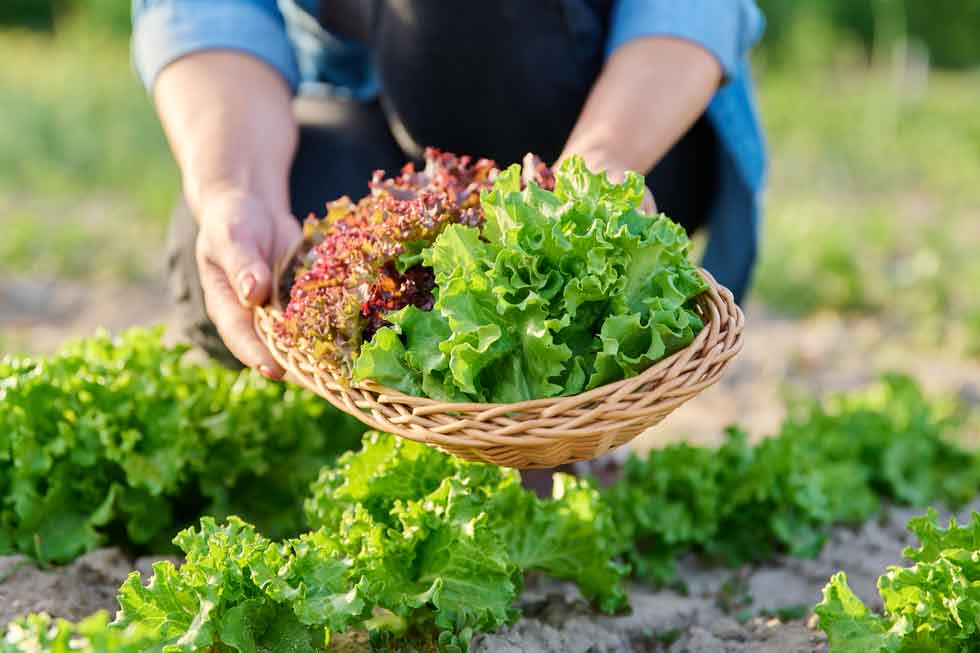
- Each variety of lettuce has its own specific harvesting time.
- Loose-leaf or oak lettuce can be harvested 30 to 40 days after sowing, Romaine lettuce 60 to 70 days, Iceberg lettuce 70 to 80 days, and Batavia and Butterhead lettuce 50 to 70 days.
- However, in addition to this estimated harvest time, it is advisable to observe the leaves according to each variety.
- In the case of Iceberg and Romaine lettuce, they should have a compact and firm head.
- We will harvest the loose-leaf variety when they reach a good size and open.
- We must prevent lettuce from starting to bolt (flowering phase), as its leaves will become bitter and fibrous.
- Lettuce leaves will be freshest and most hydrated in the early morning or late afternoon, which is the best time to harvest them. Harvesting them when the sun is high will cause them to wilt quickly.
- We’ll cut each plant at its base with a clean knife if we want to harvest completely. If we want to harvest by leaves, we’ll separate the outer leaves to allow the inner leaves to grow, especially if we’re growing loose-leaf lettuce.
- This way we can obtain several harvests from a single plant, and this method is ideal for home and community crops.
- Planting lettuce is a short-cycle activity, which is why we recommend intervening quickly during harvesting to preserve the freshness of our crop.
- First, we’ll remove any damaged or wilted leaves and avoid washing the lettuce before storing it because exposure to moisture will accelerate deterioration. We’ll store it in perforated bags or ventilated containers in the refrigerator, and we’ll place absorbent paper at the bottom of the container to absorb moisture.
- Before consuming them we will wash them very well.
- The ideal storage temperature is between 0° and 5° C, with relative humidity between 95° and 98° C; this way, they can be kept fresh for 5 to 10 days after being cut, depending on the variety of lettuce harvested.
- Storing lettuce requires important details that we must keep in mind, such as not leaving it at room temperature for long periods of time and not mixing it in the refrigerator with fruits (apples or bananas, for example), to preserve its freshness for as long as possible.
Common pests and diseases in lettuce crops.
Let’s take a look at these factors that can harm and damage our lettuce crops, and which we should be aware of.
Let’s identify the pests below:
Aphids:
- They are small insects, green, black or yellow in color, and they suck the sap from the leaves.
- Symptoms: Deformed, yellowish, and sticky leaves due to the production of honeydew that these insects emit, and they attract a large number of ants.
- Prevention and control: Introduce ladybugs into your crop, as they are natural predators that help us combat this pest. Spraying potassium soap or garlic extract is also very effective, controlling excess nitrogen, which promotes the sprouting of tender, attractive leaves for this pest.
Slugs and Snails:
- They are mollusks that prefer humid environments and feed on leaves.
- Symptoms: Leaves with traces of slime and irregularly shaped holes.
- Prevention and control: Make traps with beer, damp cardboard sheets, sprinkle ash, crushed eggshells, and preferably biodegradable paper mulch, which inhibits their appearance and, if necessary, hinders the access and passage of these pests.
Leaf miners:
- They are insect larvae that bore tunnels into the inside of leaves.
- Symptoms: barely perceptible whitish lines or galleries within the leaves.
- Prevention and control: Remove and destroy affected leaves, create yellow chromatic traps, and apply neem oil to prevent and slow the spread of this pest.
Whitefly:
- They are small flying insects that live on the underside of leaves.
- Symptoms: Weak plants, yellow leaves, and the presence of honeydew and black mold (sooty mold).
- Prevention and control: Place yellow sticky traps and spray frequently with garlic extract or potassium soap.
Let’s analyze the diseases specific to lettuce:
Mildew (Bremia lactucae):
- It is a fungus that prefers cold and humid environments.
- Symptoms: The upper surface of the leaves shows yellow spots and the underside appears with whitish mold.
- Prevención y control: evitar el exceso de humedad y el riego por aspersión; es preferible en estos casos irrigación por goteo; rotar los cultivos, ventilar adecuadamente la zona del sembrado y elegir variedades resistentes de lechugas si el área de cultivo es una zona propensa a la aparición del mildiu.
Botrytis or gray mold (Botrytis cinerea):
- It is a fungus that proliferates rapidly in high humidity conditions.
- Symptoms: Leaves and the base of the plants show soft rot and gray mold.
- Prevention and control: Eliminate plant debris and contaminated leaves from contact with the soil, restructure the drainage system, and rearrange areas where water accumulation or puddles occur; apply horsetail infusions or nettle extract.
Sclerotinia (Sclerotinia sclerotiorum):
- It is a fungus that appears in the soil and produces a white, cottony rot at the base of the plant.
- Symptoms: Plant stems suddenly wilt and rot.
- Prevention and control: Rotate crops and especially avoid planting lettuce in the same area repeatedly. Avoid excess moisture. For this, our optimal assistant, biodegradable paper mulch, will effectively fulfill its function of controlling and balancing the necessary amount of moisture and preventing the leaves from coming into direct contact with the soil.
Bacterial soft rot:
- It is a disease caused by bacteria that prefer warm and humid environments.
- Symptoms: Soft, watery leaves with a bad odor and rapid decomposition.
- Prevention and control: reorganize the drainage system to prevent flooding and avoid handling wet crops.
Final recommendations.
Planting lettuce is a very satisfying and profitable agricultural activity year-round. We can grow it on large tracts of land, in home or community gardens. In all these cases, we will benefit from its short growth cycles and short-term return on investment, as these herbaceous plants are highly valued and in high demand in all global markets.
It represents a great opportunity to generate ongoing income and encourage healthy and sustainable consumption. It also allows us to foster environmental education in our communities, as well as respect and care for our land and learn to generate life with our own hands.
Part of this lettuce planting project connects us with our best planting assistant, biodegradable paper mulch, and its ecological and protective properties from the beginning of planting until each harvest.
By using paper mulch, we can control and maintain the quality of our agricultural projects while simultaneously reducing costs, controlling the emergence and proliferation of weeds, pests, and diseases, and helping to enrich our soils with natural and ecological biodegradation.
So, let’s get to work and good luck!


